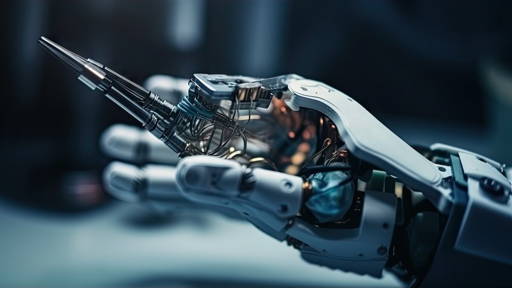There are already robots that greet patients in hospitals, prepare rooms for them, entertain residents of care facilities, and perform more complex surgeries. Where else can they be applied?
The world is changing before our eyes. During the COVID-19 pandemic, science, technology, and the resulting competencies are back in favor. Doctors have always been on the front line, but today engineers come to the fore as well. Commercial technologies developed for fun are nowadays the backbone of education and administration. Remote communication technologies provide real help in organizing work, maintaining the quality of life and, of course, saving lives.
After the rapid developments in telemedicine, which means sending information, images, and decisions remotely, now it is time for remote action. We need robots for that. Especially since it is us, humans, who constitute the most dangerous element in virus transmission, and we can see with our own eyes the cascade reaction in the healthcare system. More and more clinics, wards, and hospitals become unavailable due to personnel shortages.
Every medical diagnostic device that is able to send information remotely is now vital. Even more so, all devices that perform even the simplest actions, such as room disinfection and handling of medicines/waste, can be life-saving. This is very much the case of the devices that enable access to medical care wherever it is needed – at home, in a hospital, in the street, or retirement home.
Medical robots are not used solely for diagnostics, rehabilitation, and therapy. Robots are also successfully applied to prepare personalized medications or assist healthcare personnel by performing simple medical and nursing logistics tasks such as patient handling or room disinfection.
What are your hopes regarding AI-based robots?
Following a Czech science-fiction writer Karel Capek, a robot constitutes an artificial imitation of a human being. If that is the case, then artificial intelligence is a branch of robotics, medical robotics in particular. Now, we have bots, which, as virtual beings, advise and guide doctors and patients through medical procedures. So far, the doctors have had all of the advantages of intelligence. For this reason, the robots developed by my team are the so-called telemanipulators or remotely controlled robots. A surgeon is accountable for every decision and moves that they make. However, we are already introducing procedures for giving away some of the decision-making powers to the robots, for example, in the case of loss of communication during telesurgery.

Thanks to AI, robots are becoming intelligent devices providing aid in medical care. Nowadays, medicine makes use of such devices as the daVinci master-slave robotic surgical system (Intuitive Surgical, Sunnyvale), TSolution-One orthopedic robot (THINK Surgical, Fremont), Mazor X spinal surgery robot (Mazor Robotics), and Corindus invasive cardiology robot (Siemens Healthineers).
Neurosurgeons are already accustomed to using a mostly autonomic CyberKnife (Accuray, Sunnyvale) robot that performs planned radiosurgical procedures. Two years ago, Corindus made a breakthrough when it received a certification of the U.S. Food and Drug Administration (FDA) for a button-operated maneuver being a reproduction of the surgeon's hand movement. AI surgery is a fascinating topic because it will become a new standard in the field where standards, as in any surgical area, are hard to find.
You created one of the first artificial hearts in the 1980s. Many laboratories across the world are working on 3D-printing of other human organs. Is their development still a dream or is it already a realistic prospect?
In the 1960s, it was believed that there would be 100,000 people with artificial hearts in ten years, which would solve the problem of patients with irreversible heart failure. The first implantation of such a device (deBakey&Liotta) took place in 1966. Today, we already have thousands of patients with artificial hearts across the world. Unfortunately, the pumps remain functional only for several years. Then, they have to be replaced.
The heart still constitutes a challenge in terms of replacing it with a mechanical organ and in terms of surgery performed by a robot. When it comes to its biological equivalents, studies are being conducted in many facilities. For the time being, we can activate a heart created on the basis of a natural heart framework with the implementation of human cells. We also have valves and biotechnological vessels made of cells. Their durability and efficiency, however, leave a lot to be desired. But considering how many problems we have today all over the world because of a mere bundle of genes enclosed in a layer of fat and enveloped by a protein corona, I suppose these problems of biological organ creation are not surprising. Hence my alternative – let's make robots. In times of great trial, they might be our last resort!
Zbigniew Nawrat is a theoretical physicist who devoted his professional life to advancing medical robotics and artificial organs. He pioneered research in the artificial organs domain, especially heart valve prostheses and blood pumps (POLVAD) and created the Robin Heart surgical robot. He developed the application of computer simulation in surgical planning and founded the International Society for Medical Robotics and Bio-cybernetics Laboratory. He also acts as creative director of the Foundation of Cardiac Surgery Development, named after Prof. Zbigniew Religa in Zabrze (Poland).






